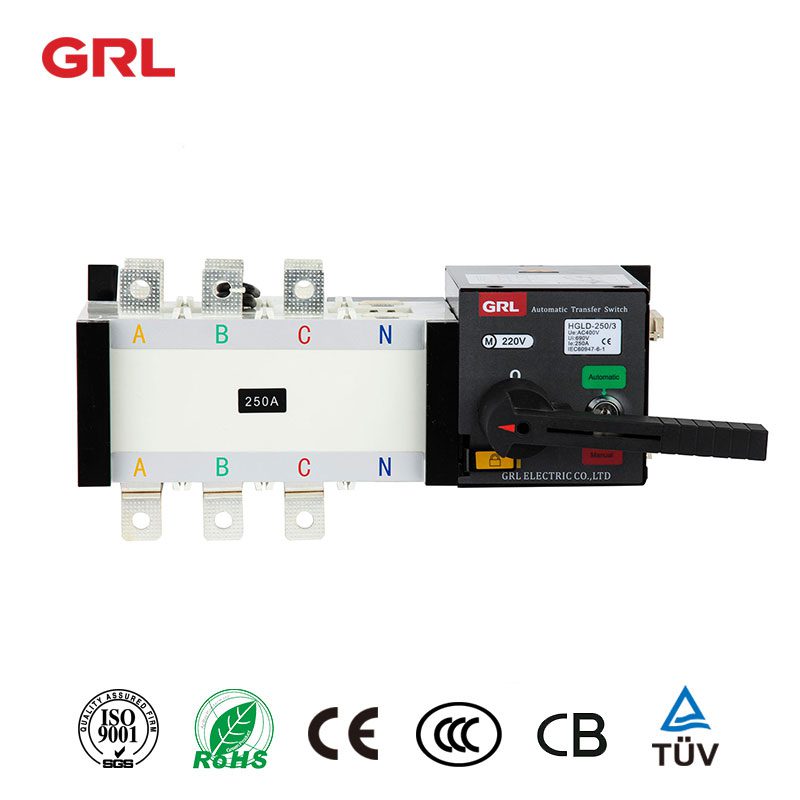
本身
# Automatic Transfer Switch for Seamless Power Backup
## What is an Automatic Transfer Switch?
An automatic transfer switch (ATS) is a critical component in backup power systems. It monitors the primary power source and automatically switches to a secondary or backup power source when it detects a failure or outage in the primary source. This seamless transition ensures continuous power supply to connected loads without any manual intervention.
## How Does an Automatic Transfer Switch Work?
The operation of an automatic transfer switch can be broken down into three main stages:
– Monitoring: The ATS constantly monitors the voltage and frequency of the primary power source
– Detection: When it detects a power failure or significant deviation from normal parameters, it initiates the transfer process
– Switching: The switch disconnects from the primary source and connects to the backup source (typically a generator) within seconds
## Types of Automatic Transfer Switches
There are several types of ATS units available, each designed for specific applications:
### 1. Open Transition Transfer Switch
Also known as “break-before-make,” this type completely disconnects from the primary source before connecting to the backup source. It’s the most common and economical option.
### 2. Closed Transition Transfer Switch
This “make-before-break” switch momentarily connects both power sources during transfer, eliminating any power interruption. It’s used in critical applications where even brief outages are unacceptable.
### 3. Soft Load Transfer Switch
This advanced type gradually transfers the load to prevent sudden power surges that could damage sensitive equipment.
## Key Features to Consider When Choosing an ATS
When selecting an automatic transfer switch for your power backup system, consider these important features:
– Transfer time (typically 1-10 seconds)
– Current rating (matches your electrical load requirements)
– Number of poles (single-phase or three-phase)
– Withstand and closing ratings
– Monitoring and control capabilities
– Enclosure type (indoor or outdoor rated)
## Benefits of Using an Automatic Transfer Switch
Implementing an ATS in your power backup system offers numerous advantages:
– Uninterrupted power supply during outages
– Protection against power fluctuations
– Automatic operation eliminates human error
– Reduced downtime for critical operations
– Improved safety by preventing backfeeding
– Remote monitoring capabilities in advanced models
## Common Applications of Automatic Transfer Switches
Automatic transfer switches are used in various settings where continuous power is essential:
– Hospitals and healthcare facilities
– Data centers and server rooms
Keyword: Transfer Switch
– Industrial manufacturing plants
– Commercial buildings
– Telecommunication facilities
– Residential homes with standby generators
## Maintenance Tips for Your ATS
To ensure reliable operation of your automatic transfer switch:
– Perform regular testing according to manufacturer guidelines
– Keep the unit clean and free from dust and debris
– Check for loose connections periodically
– Lubricate moving parts as recommended
– Schedule professional inspections annually
– Keep a log of all maintenance activities
## Future Trends in Automatic Transfer Switch Technology
The ATS market continues to evolve with new technological advancements:
– Integration with smart grid systems
– Enhanced remote monitoring and diagnostics
– Improved energy efficiency designs
– Smaller, more compact form factors
– Advanced cybersecurity features for networked systems
– AI-powered predictive maintenance capabilities
An automatic transfer switch is an indispensable component for any reliable power backup system. By automatically detecting power failures and switching to backup sources, it ensures continuous operation of critical equipment and systems. When properly selected and maintained, an ATS provides peace of mind and protects against the costly consequences of power interruptions.